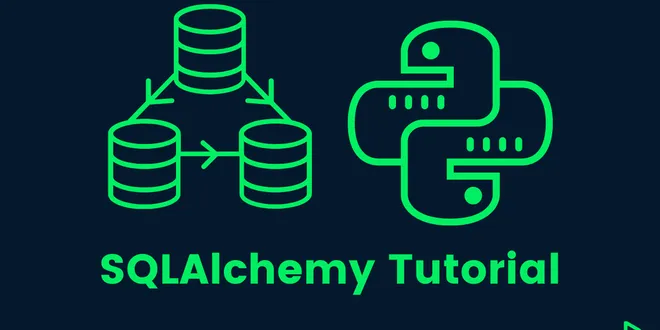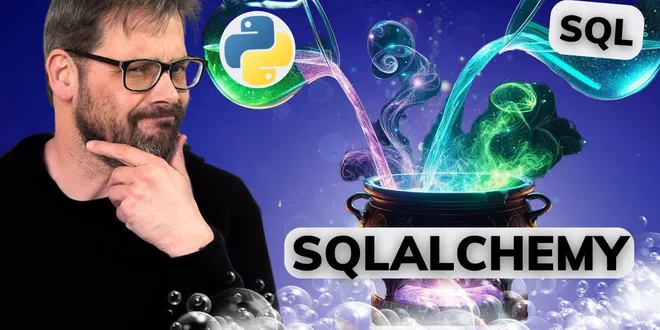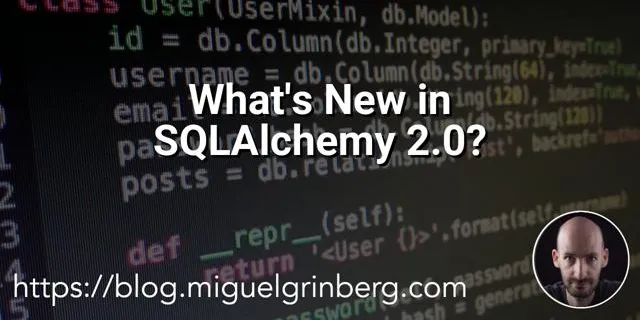SQLAlchemy
SQLAlchemy is a powerful and flexible database toolkit and Object-Relational Mapper (ORM) for Python. It allows developers to interact with databases using Python code instead of writing raw SQL statements, making database management more intuitive and efficient. SQLAlchemy abstracts the complexities of different database implementations, such as PostgreSQL, MySQL, and SQLite, enabling developers to write database-agnostic code. With features like the SQLAlchemy Core for low-level database operations and the ORM for high-level data manipulation, it caters to various application needs. This versatility makes SQLAlchemy a popular choice among Python developers for building robust database applications.

SQLAlchemy
SQLAlchemy is a popular Python-based object-relational mapper (ORM) that bridges database relations into objects.
📚 Read more at Full Stack Python🔎 Find similar documents

Getting Started with SQLAlchemy — Intro (Part 1)
SQLAlchemy is a popular Python library for working with databases. It is divided into two parts: ORM and Core. Core is more akin to a query builder, while ORM is based on creating Python classes. The ...
📚 Read more at Python in Plain English🔎 Find similar documents

SQLAlchemy: The BEST SQL Database Library in Python
Ever heard of SQLAlchemy and thought it sounded like a medieval potion? Well, it's not! 🧙♂️🔮 SQLAlchemy combines the robustness of SQL with Python's flexibility, making database management not just...
📚 Read more at ArjanCodes🔎 Find similar documents

Python 101: Episode #34 - The SQLAlchemy Package
In this screencast, we learn about the popular SQLAlchemy package. SQLAlchemy is an Object Relational Mapper for Python that allows you to interface with databases in a "Pythonic" manner. You can also...
📚 Read more at Mouse Vs Python🔎 Find similar documents

Chapter 34 - SQLAlchemy
SQLAlchemy is usually referred to as an Object Relational Mapper (ORM) , although it is much more full featured than any of the other Python ORMs that I’ve used, such as SqlObject or the one that’s b...
📚 Read more at Python 101🔎 Find similar documents

SQLAlchemy in Flask
SQLAlchemy in Flask Many people prefer SQLAlchemy for database access. In this case it’s encouraged to use a package instead of a module for your flask application and drop the models into a separate ...
📚 Read more at Flask User's Guide🔎 Find similar documents

SQLAlchemy in Flask
SQLAlchemy in Flask Many people prefer SQLAlchemy for database access. In this case it’s encouraged to use a package instead of a module for your flask application and drop the models into a separate ...
📚 Read more at Flask User's Guide🔎 Find similar documents

Translating SQL queries to SQLALCHEMY ORM
I have used SQL a lot. Only recently I have started using SQLALCHEMY ORM while developing pipelines for my company. It is a beautiful python package and really allows you to modularize the SQL…
📚 Read more at Analytics Vidhya🔎 Find similar documents

SQLAlchemy vs. Raw SQL Queries in Python: A Comparative Example
https://hotpot.ai/art-generator Introduction When it comes to database interaction in Python, developers often face the decision of whether to employ SQLAlchemy, a powerful Object-Relational Mapping (...
📚 Read more at Python in Plain English🔎 Find similar documents

What's New in SQLAlchemy 2.0?
You may have heard that a major version of SQLAlchemy, version 2.0, has been released in January 2023. Or maybe you missed the announcement and this is news to you. Either way, I thought you'd be…
📚 Read more at Miguek Grinberg Blog🔎 Find similar documents



